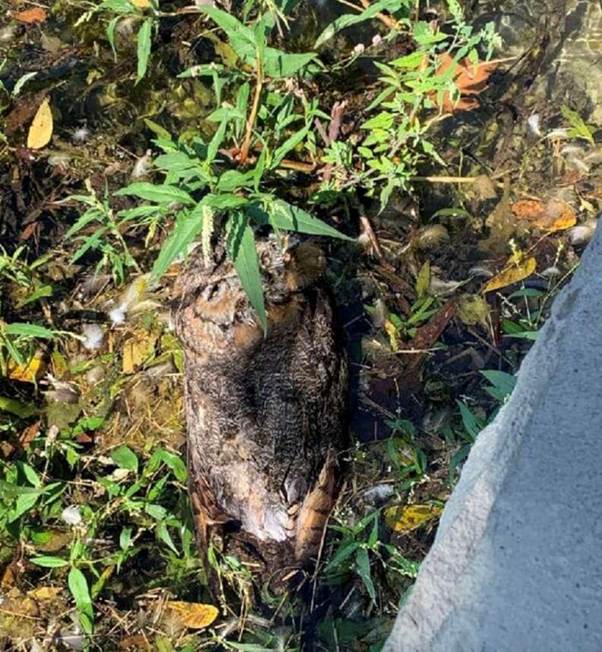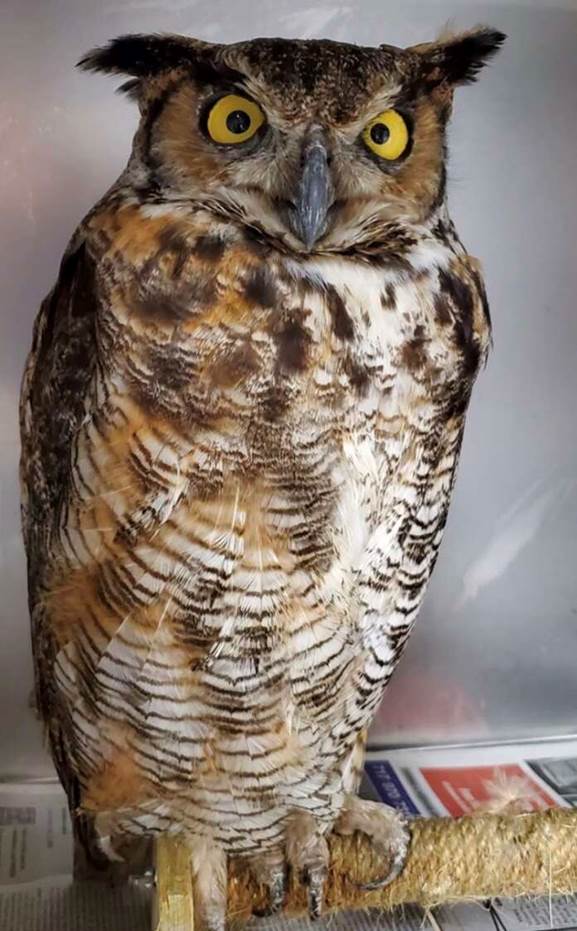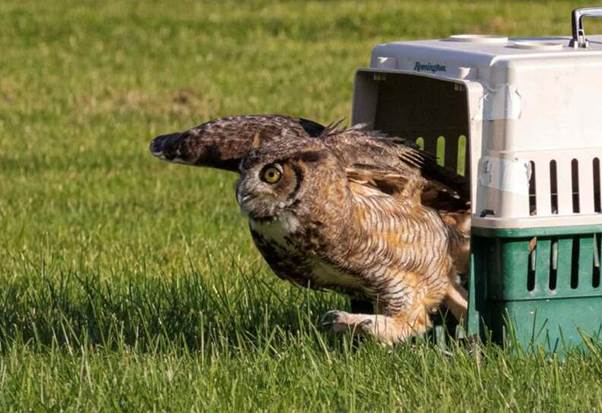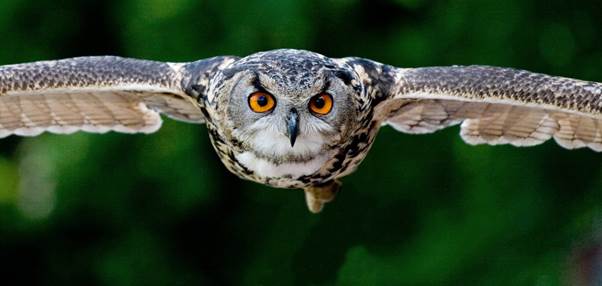On a recent day in Boiling Springs, Pennsylvania, a sergeant with the Pennsylvania Game Commission received a call about an animal in distress at the town’s popular Children’s Lake. Concerned, the officer hurried to the scene, unsure of what he would find.
As he scanned the surface of the water, something unusual caught his eye. Blending almost perfectly with the muddy ripples near the edge of the lake was a large, feathered figure. At first glance, it was easy to miss, but on closer inspection, the sergeant realized he was looking at a great horned owl struggling for her life.
Startled, the officer took a quick photo and sent it to staff at Raven Ridge Wildlife Center. The experts there urged him to bring the bird in immediately, and he wasted no time pulling her from the water and transporting her to safety.

Exhausted and Injured
Once at Raven Ridge, the owl’s condition became clear. Rehabilitators suspected she had flown into the cement wall that lines the lake, a common hazard for birds that hunt near water. The impact left her with injuries to both wings, leaving her unable to fly and stranded in the water.
Her feathers were drenched and foul-smelling from the muddy lake, and she was visibly exhausted from her ordeal. Without intervention, she wouldn’t have survived much longer.
Staff at Raven Ridge carefully treated her injuries, provided fluids to combat dehydration, and allowed her the one thing she desperately needed — rest. Though weak, the owl’s piercing eyes and fiery spirit told rescuers she wasn’t about to give up.
True to her wild nature, she wanted nothing to do with her human caretakers, snapping her beak and glaring whenever they approached. Ironically, this was a good sign — it meant she still had the instincts of a fierce predator, instincts she would need once she returned to the wild.

The Road to Recovery
In the days that followed, the owl steadily improved. Her strength began to return, and her appetite came back as she started eating on her own. According to wildlife rehabilitator Tracie Young, the change was remarkable.
“Once she started eating on her own again, and [her] wings [were] healing, it was like the fast track for her,” Young told The Dodo.
When her injuries had stabilized, staff moved her into an outdoor flight enclosure — a large space where recovering birds of prey can safely test their wings again. To everyone’s relief, the owl quickly proved she was capable of strong, steady flight.
The transformation from a waterlogged, immobile bird to a powerful hunter ready to take to the skies again filled the rescue team with pride.

A Triumphant Release
At last, the day of release arrived. Staff chose a location not far from where she had been found — a spot rich with open fields for hunting and tall trees for roosting. With great care, they carried her crate to the site and opened the door.
In an instant, the owl stepped out, spread her broad wings, and lifted into the sky. She soared effortlessly, her silhouette cutting across the horizon before disappearing into the wilderness where she belonged.
For Young and the rest of the Raven Ridge team, it was a moment of pure joy.
“Each animal and each release, especially with the birds of prey and the owls and stuff, it’s a sigh of relief when you see them taking off,” Young said. “They got a second chance. They’re free again.”
What began as a desperate struggle in murky water ended in freedom and strength — a powerful reminder of the importance of rescue work and the resilience of wild creatures when given the opportunity to heal.


